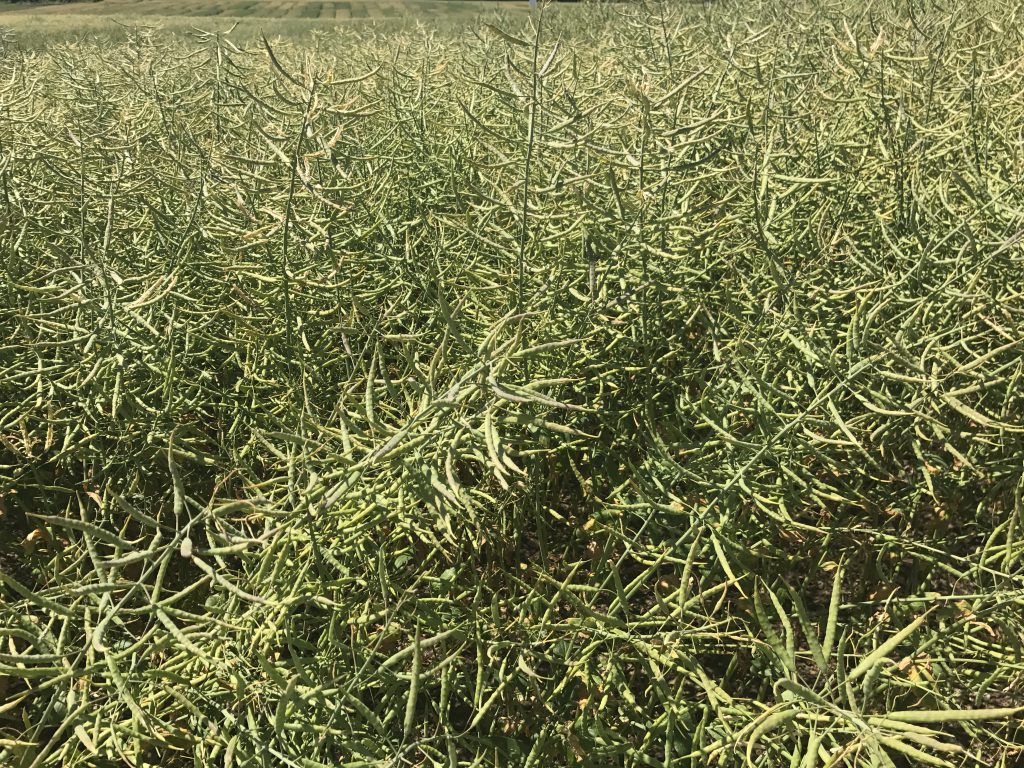Bussiness
Winter crop conditions see improvement across UK – AHDB – Agriland.ie

The Agricultural and Horticultural Development Board (AHDB) has confirmed that winter crop conditions remain poor across the UK on a historic basis.
However, recent weeks have seen a significant improvement in the situation. This is a direct result of the dry and significantly warmer weather conditions that have impacted on all crops since the middle of April.
Winter combinable crops in the UK suffered a lot of very wet weather this year, from planting and establishment through to late March and beyond.
As a result, crop conditions are more varied than usual. The crops now, are not the best we have ever seen, but have surprised many people with their improvement from earlier in the year.
While some parts of the country are looking more or less as they should, there are notable bare patches and large gaps, particularly in wet corners and headlands across several regions. Central England is particularly affected.
Winter crops
Throughout the UK, the variation in winter crop condition is striking. Differences in soil types, drilling dates and subsequent rainfall, significantly affected crop establishment.
Additionally, these factors have hindered growers’ ability to apply treatments in a timely manner both pre and post-emergence.
Most inputs have now been applied to all crops with the possible exception of pre-harvest treatments.
The crops have all caught up with their normal crop development progress and are on track for a timely harvest having sped through some growth stages at a remarkable pace. How much this will have impacted yield is yet to be seen.
The effects of a difficult winter for much of the UK were felt long into the spring. Saturated soils and compaction issues due to heavy rainfall caused delays in spring drilling across many regions.
However, conditions eventually improved, allowing most spring crops to be established in good order.
Specifically, many growers in Scotland are pleased with the performance of spring crops up to this point. Ploughing and, therefore, drilling, was late – but crops are looking healthy and full.
Wheat
Nationally, 56% of winter wheat is rated as either good or excellent, up slightly from 55% last month. This remains well below the same time last year, when 76% of the crop was rated in this condition.
Many winter wheat fields are not looking as tidy as usual, or as many farmers would wish their crops to look at this time of year.
The fact that most fields have a crop at all is, in some parts of the UK, a surprise to many who expected more fallow and failed crops given the situation earlier in the year.
Those who kept investing in their winter wheat are largely pleased with their decisions.
Spring wheats are looking well, with 59% of crops across GB in good or excellent condition. This is comparable to the report but still below the 68% last year.
Winter barley
The percentage of the GB winter barley crop rated as either good or excellent is 69%. This is up from the 62% last month, but down from 84% a year ago.
The winter barley crop is starting to turn golden, and sunshine would be welcomed for this crop now to swell the emerging grain. It has coped with the poor winter weather conditions well and some farms appear to have big yields.

If the crops can remain standing for another few weeks, the finished product might be quite good.
Winter barley was more established last autumn when the deluges began, so had a greater resilience than the majority of wheat crops.
Even in the worst hit regions of the midlands, many fields are looking comparatively strong.
Spring barley
Across all regions, 71% of spring barley is now classified as either good or excellent, up from 55% last month. This is also a higher proportion that the same point last year, when just 53% was rated as in good or excellent condition.
The spring has provided excellent growing conditions on the whole and flag leaves are now emerging.
Short of the need for sunshine, spring crops, including barley could offer the best of a very difficult year for combinable cropping in the UK.
Oats
Overall the oat crop is looking well and strong, especially spring crops, although some look rather stressed following the heavy rain, e.g., in Scotland
Across England, Scotland and Wales (GB), 57% of winter oats are rated as good or excellent, up from 52% last month. But this is still well below the 74% rating recorded a year ago.

For spring oats, the combined good or excellent rating is 77% across all regions, up from 73% last month. One year ago, 69% of spring oats were rated good or excellent.
Oilseed rape
The national rating for winter oilseed rape (OSR) is 54% as either good or excellent, up from the 49% last month. But it is still below last year’s 63%.
OSR is now in the process of ripening, and some desiccation has already taken place. Gaps in fields may have been filled with weeds so cleaning might be required ahead of harvest.

Overall yield will be lifted when the failed land is taken out of the equation, and this should not be overlooked when all is completed. Crops in the west of Englnd generally look better than in the midlands or the east.










